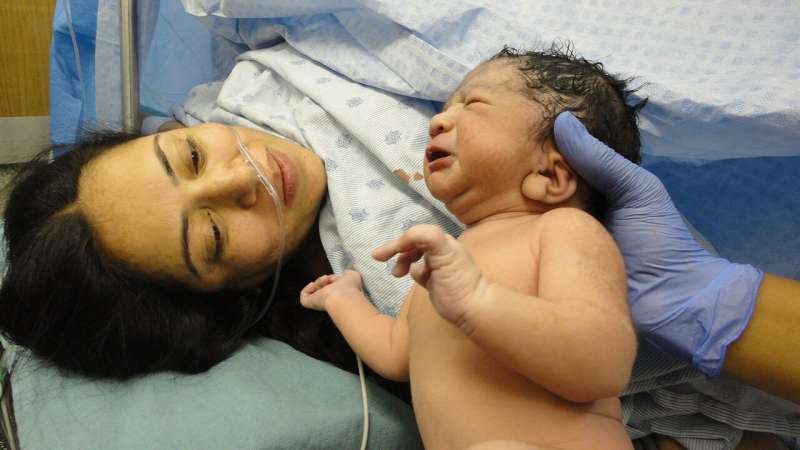Mothers and babies can be saved by controlling cesarean deliveries


A 30-year global study led by University of Queensland researchers has found rates of childbirth by cesarean section are rising and exceeding safe levels in many developing countries.
UQ’s Life Course Center investigated rates of cesarean delivery in 74 low and middle-income countries, reporting increasing risks to the lives of mothers and babies.
Ph.D. candidate Md. Mehedi Hasan said that cesarean delivery rates had increased over time in most of the countries, some quite remarkably.
“In more than one-quarter of countries, cesarean rates exceeded the optimal rate of 15 percent,” Mr Hasan said.
“The highest rates were in the Dominican Republic at 58.9 percent, Egypt at 55.5 percent and Turkey at 48.3 percent.”
Cesarean delivery rates above 20 percent place mothers and babies at greater risk of surgery-related complications for current and subsequent pregnancies.
At the same time, cesarean rates below five percent also negatively affect maternal health.
The study found cesarean rates below five percent in more than one-quarter of low and middle-income countries, with the lowest rates in Madagascar and Chad at 1.5 percent and Niger at 1.6 percent.
“Controlling cesarean delivery at the optimal level is not an easy task,” Mr Hasan said.
“It is challenging and requires a multi-faceted collaborative approach.
“What is crucial for controlling the overuse of cesarean delivery is the use of the service in a meaningful way when medically required.”
With data from nearly 1.5 million live births, the study called for improved training of health professionals, health education for women, and labor management guidelines to achieve optimal cesarean section rates.
Associate Professor Abdullah Mamun said to reach the UN 2030 Sustainable Development Goals on reproductive, maternal, newborn and child health, all births should be delivered at facilities where demand-based emergency obstetric care service is available.
“In developing countries, obstetric complications during childbirth are responsible for 70 percent of maternal deaths,” Dr. Mamun said.
“Ensuring women have their babies in facilities with demand-based use of cesarean section can save lives and positively impact maternal and child health.”
The report also found that increasing cesarean delivery rates were highest among the richest women living in urban centers.
“The highest rates of cesarean delivery were found in high-income and urban women, rather than low-income and rural women,” Dr. Mamun said.
“These inequalities are widening alarmingly over time.”
Source: Read Full Article